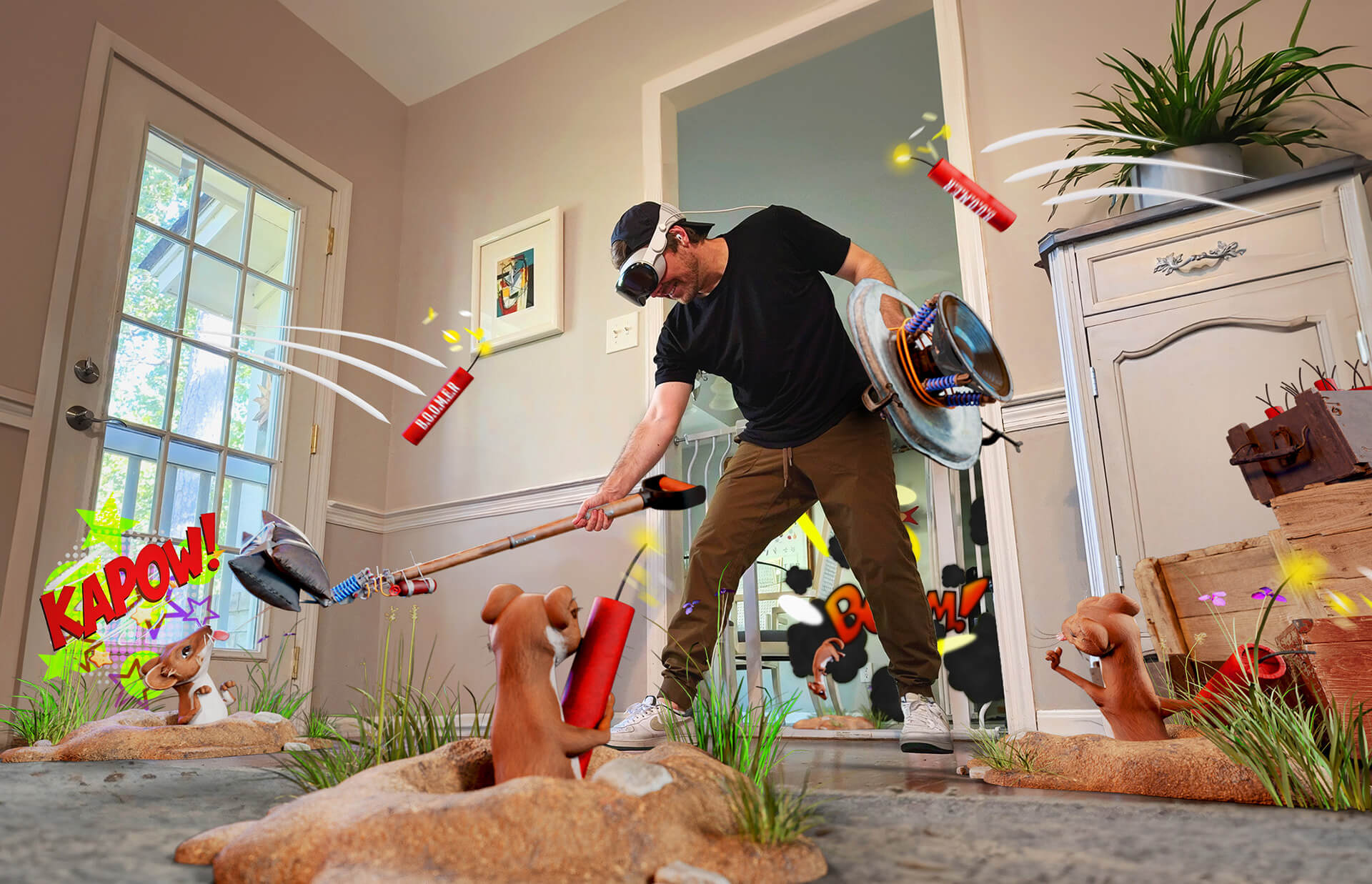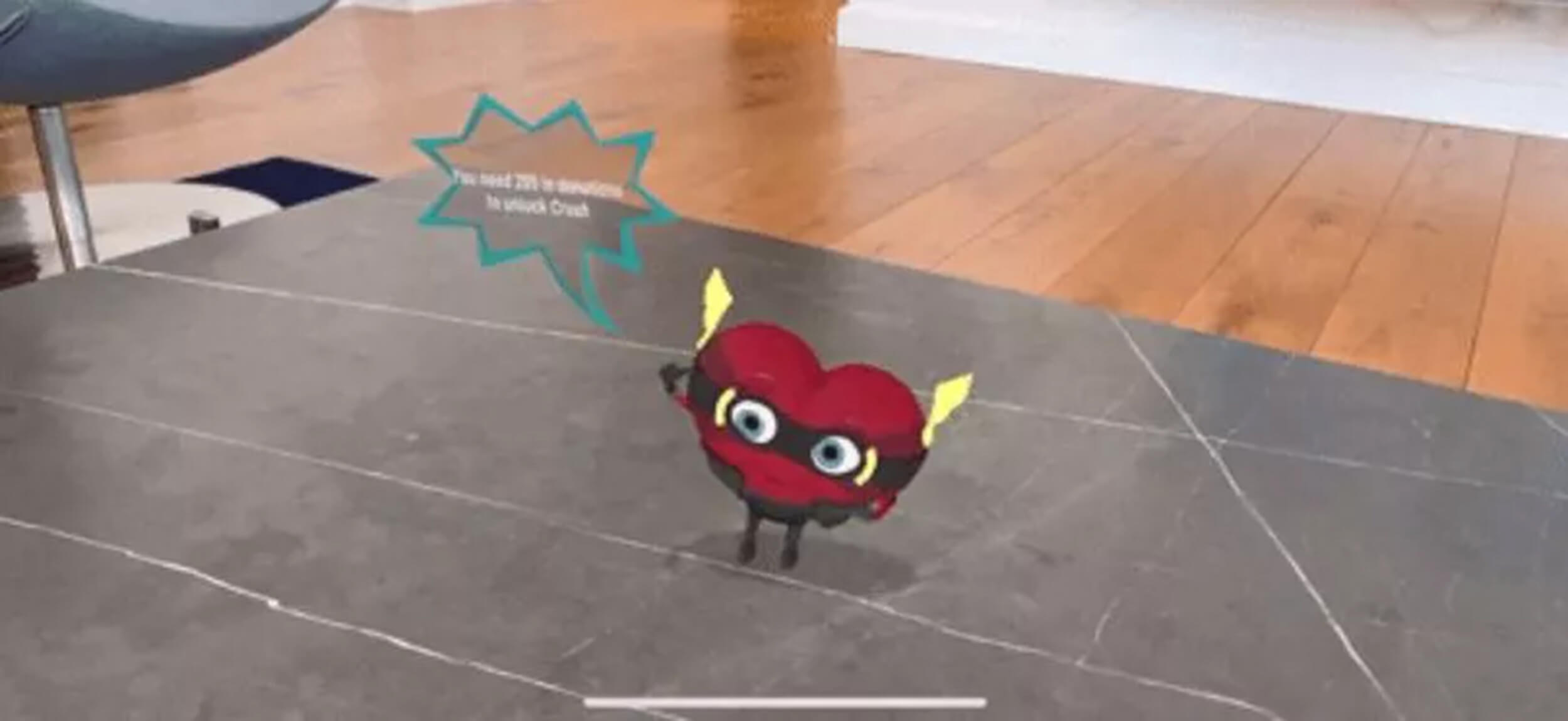Augmented reality (AR) allows us to see the real world in front of us with a digital augmentation laid over it. For example, web AR technology can place a digital sofa in your room, a painting on your wall, or an interactive, multi-player game on your table.
Despite its past wrap for consumer experiences, AR has many applications beyond gimmicky entertainment. Businesses use it to enhance virtual shopping, training, navigation, modeling, gaming, and even equipment maintenance and repair.
There are two primary ways for people to experience AR. One is application-based AR, and the other is web-based augmented reality. While app-based AR does allow for a wider range of features, webAR is much more accessible and user-friendly, making it a more effective choice. Read on to learn more about the advantages of Web AR technology.
App-based AR Technology
App-based AR provides an immersive augmented reality experience that is accessible through downloadable apps. This kind of AR is developed using tools that have a powerful object, depth, surface, and lighting recognition. This allows for extensive placement and tracking of objects in detailed rendered environments.
Developers deploy app-based AR using two primary computer vision frameworks: ARKit and ARCore.
ARKit
ARKit is Apple’s AR computer vision framework which developers use to create apps exclusively for iOS devices. It has many of the same powerful features as ARCore, such as light estimation, image tracking, and motion capture.
However, ARKit does have some key differences from ARCore. The most important is that support from the Apple ecosystem allows for easier development. Apple improves ARKit by regularly adding new features and upgrades, making it the tool of choice for many developers. ARKit comes at a price of $99 per year.
ARCore
ARCore is Google’s toolkit to create app-based AR. Its biggest edge over ARKit is its versatility, as it supports development for both Android and iOS platforms. It’s also free-to-use. Google Playground is an example of a well-known Android application that uses ARCore as its framework.
Also, the introduction of LiDAR Scanner in the new iPhone line accelerates the potential of web AR. The new LiDAR Scanner allows rapid plane detection, which allows instant placement of AR objects in the real world. Without scanning the entire scene, it creates a more responsive AR experience.
Pokémon Go is a popular example of an AR technology application deployed on both iOS and Android devices. As such, it is developed with ARCore and ARKit.
Web-Based AR Technology
WebAR is an augmented reality experience that is accessible through a web browser instead of an application. This offers users convenience as there is no need to download a full app. Due to this reduction in steps, WebAR has generated huge demand from companies looking for a frictionless AR option.
Compared to its app-based counterparts, web-based augmented reality does have somewhat limited features. This is because some supporting frameworks are still undergoing development, as well as the data-light nature of browsers. It does allow for less-complex animations, video, image target detection, and interactivity.
The potential of Web AR technology is rapidly growing as mobile browsers fast-track support. Browsers now allow Web AR to use the camera, gyroscope, magnetometer, and accelerometer of devices, giving developers the tools needed to produce creative experiences.
Let’s chat
Not sure where to start? Book a free strategy call with us to get started! No strings attached.

Key Differences Between Apps and Web AR Technology
App-based AR has more features than web-based augmented reality due to its ability to make use of higher levels of technology. This enables developers to create a wide range of experiences such as multi-player gaming, indoor way-finding, and much more.
The better-quality computer vision that ARKit and ARCore offers is the greatest advantage app-based AR has over Web AR. Performance is also better on an app, as higher memory allows for better animation and interactivity.
The biggest drawback of app-based AR technology is getting users to download an application. It’s a data-intensive step that many people would rather do without. Furthermore, it’s more challenging and requires more QA testing to make an app that’s compatible across different phones and operating systems.
On the other hand, Web AR allows users to interact without having to go through any additional steps. Accessing it is as simple as scanning a QR code that links to an AR-enabled website. This enables greater reach, conversions, and engagement, translating to higher sales.
This accessibility has enabled Web AR to reach twice as many mobile devices as its app-based counterpart. It’s particularly attractive to companies seeking to provide their users with a uniform experience across multiple platforms.
Yes, Web AR does not have as much power as application-based AR, but by incorporating creative workarounds, it still offers a very effective and accessible experience.
Keep up to date
Sign up to our newsletter for exclusive updates and content, delivered directly to your inbox.
Popular Web AR and App-based Deployments
Saatchi Art

Saatchi Art’s “View In My Room” feature was the largest ever deployment of WebAR.
Saatchi Art used web AR technology to allow their users to view over 1.4 million works of art in their home before purchase. This feature sought to boost sales by addressing findings that 70% of art buyers are hesitant to make a purchase before previewing an artwork. This deployment helped Saatchi Art’s mobile transactions grow 100% year-over-year in Q2 2020.
American Heart Association

Within just a year, a significant impact in terms of donations and registrations was seen as a result of the successful AR deployment.
The American Heart Association used web-based AR to release a set of interactive characters, games, and features. Distributed to over 18 million children across the US, over an incredible 37% of them engaged with the AR. This raised over $9.4 million through the mobile app alone.
Engagement Statistics
AR technology is a rapidly growing space, and many companies are beginning to take notice. ARtillerly Intelligence released a report projecting revenue from AR to surge from $4.98 billion in 2019 to $12.19 billion in 2024.
This massive growth comes as no surprise if you take a look at how successful and popular AR is. Consumers are very receptive to it, with 48% of them more likely to shop at a retailer offering AR experiences. It also has a 70% higher memory response rate and 4x longer view time compared to the video.
Brands also have huge success using AR. L’Oréal tripled conversions after allowing customers to try on make-up using AR technology. Herschel Supply Co used AR furniture visualization and subsequently reported a 152% increase in revenue per visit.
Web AR is far more effective in reaching users than app-based AR. There’s a 50% drop-off in engagement for experiences that require downloading. Even after an AR app has been downloaded, only 25% use it beyond the first interaction. Put together, an AR application stands to lose up to 90% of its audience, with only 10% of users re-engaging.
Conclusion
Web AR technology is clearly the way forward for companies seeking to maximize their engagement by offering users a seamless augmented reality experience. Its greatest asset is its instant accessibility across multiple devices and platforms.
Working with companies ranging from startups to Fortune 500s, Rock Paper Reality (RPR) is a veteran Augmented Reality agency that develops best-in-class Web AR content. RPR works effectively from start to finish, creating and executing strategies proven to drive brand awareness, engagement, and revenue growth for clients including Microsoft, Sony, and Netflix.
